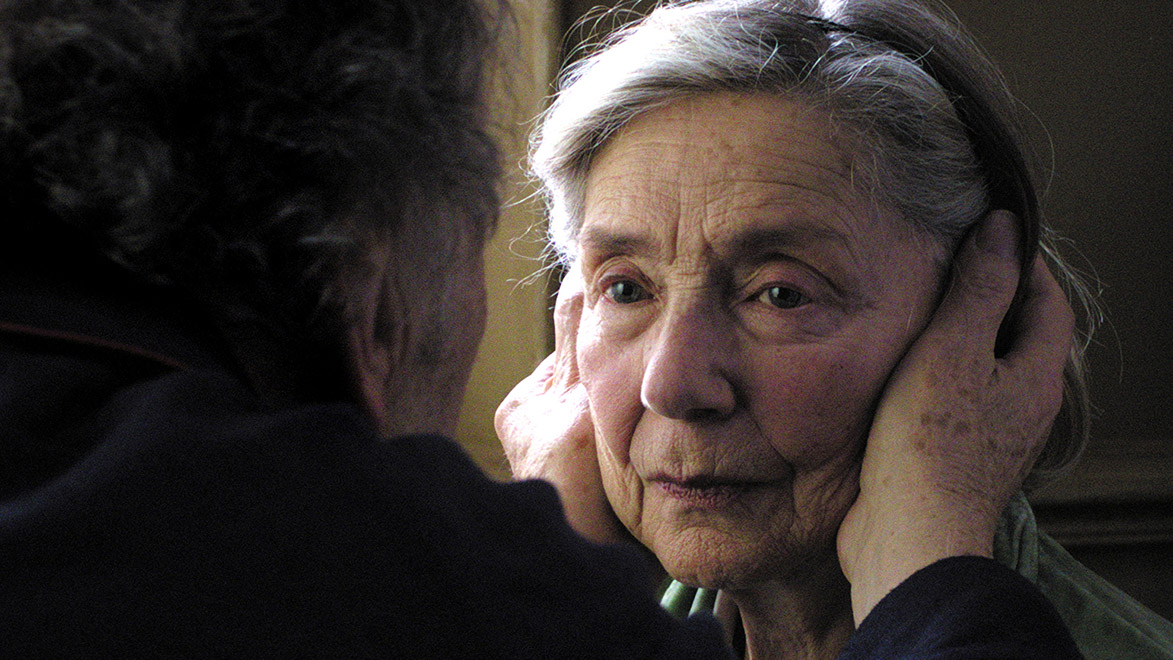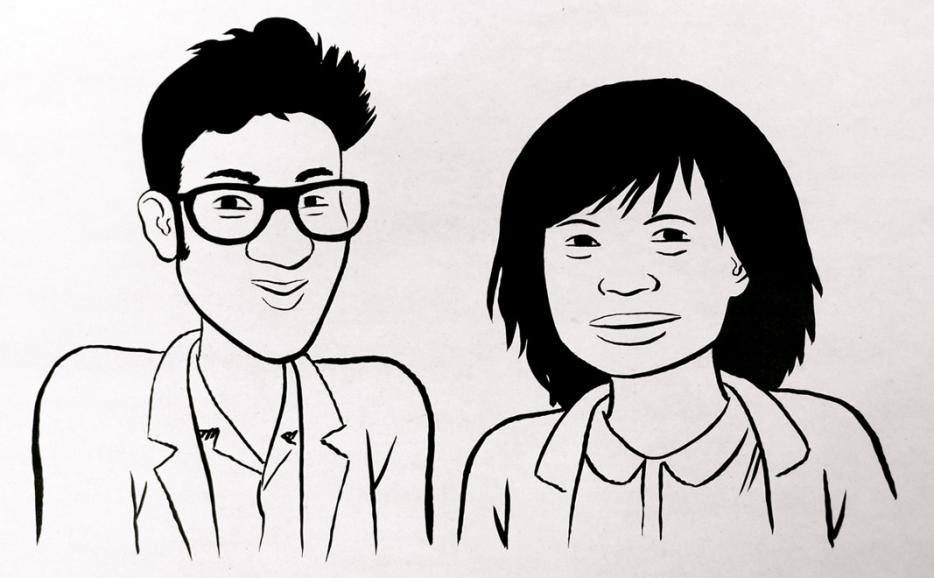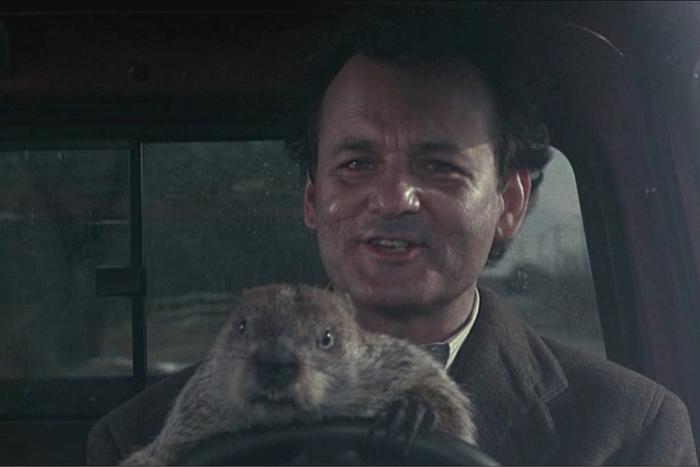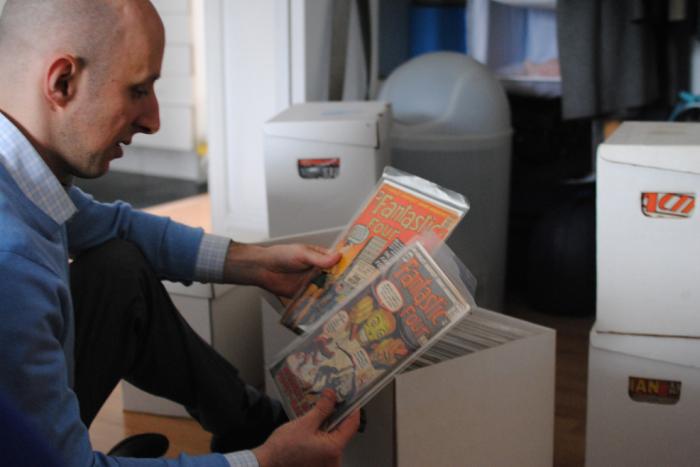Every week or so, Sook-Yin Lee and Adam Litovitz have a movie date. Then they talk about the movie. Discussed this week: Amour, directed by Michael Haneke.
SOOK-YIN: When I found out that Michael Haneke, the Austrian filmmaker known for his bleak and disturbing portrayals of human brutality, had made a new movie that left the audience sobbing at Cannes, I thought: “Good gosh, is he going soft on us, exploring a couple in love for a lifetime and their unfortunate passing?” But, Amour is definitely not Away From Her.
ADAM: He’s not known for showing his characters weeping. They’re more likely to talk about stories from their childhood that made them weep, or sit austerely in an audience watching solo classical piano performances.
SOOK-YIN: My expectation that this would be the Haneke hankie movie was totally thwarted. I didn’t grab a single tissue because there were no tears. Amour shows an unrelenting, slow deterioration to the death. It’s not the weep fest of Love Story. It’s an unsentimental portrait of a body decaying.
ADAM: I wouldn’t say it’s utterly without sentiment. The injection of wishful thinking dream-sequences, of his wife playing piano, or the nightmares—it’s still so swept away in the fantasy experience of coupledom, in a hermetically-sealed, immaculate apartment of the sort that we saw in Eyes Wide Shut, which also dealt with a couple’s arcane world. This feels old-fashioned. The couple has young, Schubert-obsessed piano students showing up in black turtlenecks, presenting them with white flowers, and writing them romantic thank-you letters. It doesn’t feel of this time, yet they’re struggling with CD technology. It has a bizarre quality.
SOOK-YIN: It’s Michael Haneke’s strange style of romanticism. It’s not a documentary in the palliative care ward, but he is trying to be unsentimental, with a locked-off camera taking a single shot in real time of a paralyzed woman going to the bathroom. There are no quick cuts. He forces you to stick with a difficult situation for a long time.
ADAM: He still uses jarring juxtapositions between two shots. He’ll have the Anne character [Emmanuelle Riva] suffering, and then cut to a friendly neighbor bringing over a case of Evian water, an ever-present substance in the film.
SOOK-YIN: This is a look at a couple that’s been together forever. They’ve been young and grown old together. Anne ends up falling prey to dementia and paralysis, and has to undergo the painful and humiliating course of death, with her husband Georges [Jean-Louis Trintignant] as her constant companion and primary caregiver. In the past, Haneke’s movies have had layers of symbolic meaning. Though he makes some interesting cinematic choices, it’s all surface here. He tells the story through action. At times I was reminded of comedian Tim Conway’s white-haired orchestra conductor, a character who moves in tiny, excruciatingly slow steps to his podium.

ADAM: I’m wondering about how the idea of monstrousness pops up in the movie. I’m thinking about the scene where Georges fires a caregiver. We haven’t been given the context to know if it’s justified—if she was a terrible employee.
SOOK-YIN: It was clear to me that she was terrible.
ADAM: Because she was grooming Anne, and putting mirrors in front of her face?
SOOK-YIN: Anne’s hair was her prized possession. She’s got freakin’ great hair—like Gena Rowlands. As she deteriorates, it becomes oily and ragged. Georges hires a hairdresser to come in once a week, but we see her brushing it very harshly, and when Anne screams, she ignores her and forces her to look at her reflection. This is not good care.
ADAM: We can all complain about a lousy nurse or two who have treated a loved one. Going back to the mirror on Anne’s suffering—this film also poses the question of what is the value of depicting suffering. What do we have to gain by bearing witness to it? What kinds of depictions of suffering are of value?
SOOK-YIN: Haneke simply dramatizes a slow suffering, like the Stations of the Cross. Anne regresses to become an inconsolable child, constantly screaming and moaning, and Georges has had enough. At one point, he’s pressed to his limit and strikes his wife. We see how difficult it is to take care. We see a woman who doesn’t want to be alive, forced to live, because Georges can’t bear to see her go. It’s a conundrum. That’s what I found interesting about the movie. By the end of it, I was thinking that life is long and beautiful, but sometimes you just gotta fold ‘em. I was with Anne: “Just let me die, will ya?” Haneke tries to bring us through the experience of it—to realize that this grasp for eternal life, and eternal love is futile. At the end, you probably want to die.
Mortality plays the bad guy
SOOK-YIN: When we first see them, they’re the embodiment of the well-educated elderly French couple with good taste. Everything’s seemingly perfect in their lives.
ADAM: Patrons of the arts. Lovers of art.
SOOK-YIN: They live in a beautiful apartment. They love one another. And they wear good clothes. I hope that when I’m in my eighties I look as good as them. But I get a sense as well that some unspoken tension has always been a part of their relationship. They’re the kind of couple that sits for hours reading the newspaper together, but doesn’t necessarily talk. There’s love there, but I sense a restraint, a kind of repressed sophistication.
The story stabs away at the cracks in their veneer. Sometimes I felt oppressed being in that apartment with them—the passive aggressive communication through inference, silence, and looks. As she’s dying what they say is the opposite of what they feel. She’s suffering and can’t even say, “I’m dying.” They’re in denial. Like, “it’s okay honey, I’ve got you this motorized wheelchair.”
In a movie like Haneke’s Funny Games, there’s a clear antagonist, someone out to kill you. In this movie, the couple is surrounded by loving people who want to help. Their daughter is consumed by her own real estate worries, but obviously loves her parents. There’s no tangible bad guy other than mortality itself.
ADAM: These people are caring and giving in every possible way, but there’s still a sense of the couple being hermetically-sealed in the apartment, and the characters are each trapped in their own fantasies. Georges cuts off flower petals to adorn Anne’s body, and imagines her in all these dream sequences. It reminds me of Kenji Mizoguchi’s Ugetsu, which I just watched last week. It involves a husband being led away from his perfect family towards a temptress, who winds up being a ghost. Later, when his wife dies, she reappears as a ghost to torment him and lead him back on his path to hard work and righteousness. There’s always a phantasmagoric dimension to relationships between couples. As honest as they are in caring for each other, there’s ultimately a type of separation. There’s a need to strangle the bird.
SOOK-YIN: They’re lovers at a deep, soul level, but there comes a point where two is not one. We see her full of pride in a piano student who’s forged a successful career. But, as she declines physically, she couldn’t care less. She turns off his music. There comes a point where all you care about is yourself and your own feelings.
The title of the movie is Amour. We not only see her die in the presence of her lover, but we see her detach mentally and spiritually from him. Perhaps that’s what love is as well. You won’t necessarily die in a death-embrace, and you might end up on your own journey away from the one you love.






